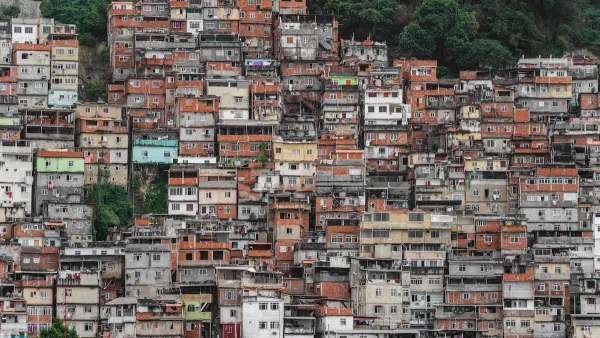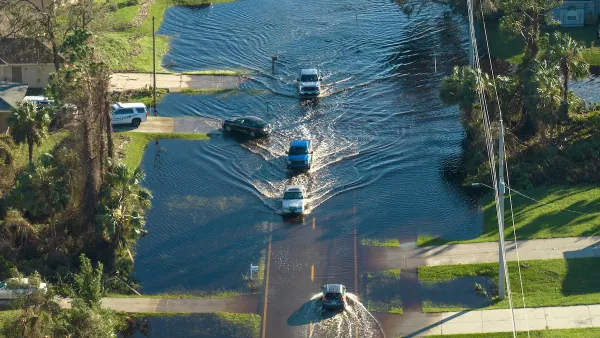The time to start preparing for mass migration spurred by climate change is already here.

"Climate change impacts are projected to displace 216 million people in developing regions by 2050," reports Tim McDonnell.
That's the conclusion of a new report from the World Bank, which predicts that sea-level rise and water scarcity will be the primary driving force of climate-related displacement—some of which will occur within the borders of existing countries and even within city limits.
"As early as 2030, cities like Cairo, Hanoi, Dhaka, Tashkent could become climate immigration hotspots. The latest report, which focuses primarily on North Africa, East Asia, and Central Asia, builds on a document from 2018 that focused on sub-Saharan Africa, Latin America, and South Asia," explains McDonnell.
The World Bank report echoes the findings of the Intergovernmental Panel on Climate Change report from August of this year, saying that every degree of warming that can be mitigated through emission reductions will have an impact on the number of migrants later in the century—and the conditions they will face as they move around their countries.
"People move around anyway, and urbanization has been growing for decades," writes McDonnell. "The challenge, highlighted by the report, is to ensure that destination locations are ready, with safe, affordable housing, employment opportunities, and sufficient public services for a growing population."
FULL STORY: The World Bank says climate change could displace more than 200 million people

National Parks Layoffs Will Cause Communities to Lose Billions
Thousands of essential park workers were laid off this week, just before the busy spring break season.

Retro-silient?: America’s First “Eco-burb,” The Woodlands Turns 50
A master-planned community north of Houston offers lessons on green infrastructure and resilient design, but falls short of its founder’s lofty affordability and walkability goals.

Delivering for America Plan Will Downgrade Mail Service in at Least 49.5 Percent of Zip Codes
Republican and Democrat lawmakers criticize the plan for its disproportionate negative impact on rural communities.

Test News Post 1
This is a summary

Test News Headline 46
Test for the image on the front page.

Balancing Bombs and Butterflies: How the National Guard Protects a Rare Species
The National Guard at Fort Indiantown Gap uses GIS technology and land management strategies to balance military training with conservation efforts, ensuring the survival of the rare eastern regal fritillary butterfly.
Urban Design for Planners 1: Software Tools
This six-course series explores essential urban design concepts using open source software and equips planners with the tools they need to participate fully in the urban design process.
Planning for Universal Design
Learn the tools for implementing Universal Design in planning regulations.
EMC Planning Group, Inc.
Planetizen
Planetizen
Mpact (formerly Rail~Volution)
Great Falls Development Authority, Inc.
HUDs Office of Policy Development and Research
NYU Wagner Graduate School of Public Service





























